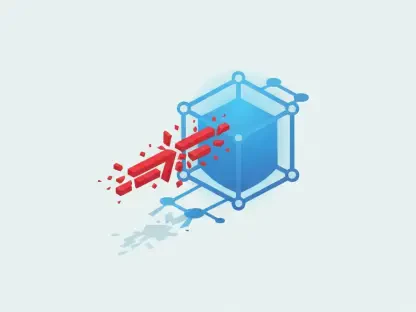Open Source Intelligence (OSINT) is a powerful method for collecting, analyzing, and leveraging publicly accessible data to gain valuable insights. As the internet and digital technologies continue to grow, OSINT has become an essential tool for enterprise cybersecurity management and various business applications. This article explores the intricacies of OSINT, its operational mechanisms, diverse use cases, popular tools, and the advantages and disadvantages it presents.
Understanding Open Source Intelligence
OSINT involves gathering data from publicly accessible sources to collate relevant information about specific individuals, organizations, or topics. This intelligence can come from a wide array of sources, including online web pages, social media platforms, public records, and news media. The primary goal is to derive actionable insights without needing access to private or classified information.
Historically, OSINT was rooted in military espionage, where information was extracted from newspapers, radio broadcasts, and other public mediums. While the advent of the internet has significantly expanded the scope and volume of sources available for OSINT, the fundamental principles remain unchanged—identifying and leveraging open data for strategic insights. Today, OSINT plays a pivotal role in cybersecurity, market research, competitive analysis, and more, providing organizations with the information needed to make informed decisions and maintain a competitive edge.
The OSINT Process: From Data Collection to Analysis
The OSINT process begins with defining the scope and requirements of the information needed. This is then followed by the painstaking task of harvesting data from various public sources. The key steps involved encompass initial search and discovery, targeted data collection, meticulous data analysis, and stringent validation and verification. This journey often starts with simple queries on search engines or social media platforms to gather readily accessible data, progressing gradually to more targeted data collection focused on specific databases, websites, or data feeds relevant to the subject of interest.
Data analysis forms the crux of OSINT, utilizing specialized tools for sorting, analyzing, and deriving meaningful insights from the collected data. However, the process does not stop there. Ensuring the accuracy and reliability of gathered information through cross-referencing and fact-checking is imperative. Depending on the depth and specificity of intelligence required, OSINT can adopt different approaches. Passive OSINT involves unobtrusively viewing accessible data without direct interaction or potential detection by the target, whereas active OSINT proves more intrusive, incorporating direct interactions like filling out forms or accessing paywalled content to gather more detailed or real-time information.
OSINT Data Sources: A Wealth of Public Information
OSINT data can be compiled from a multitude of publicly available datasets, each offering unique insights. Social media platforms, for example, can provide valuable insights into user behavior, sentiment, and social trends, while public websites offer data on company profiles, forums, and blogs. News media serve as rich sources for updates on recent events, opinions, and public statements, whereas academic and scientific studies contribute published research and data ripe for scholarly analysis.
Additionally, the burgeoning Internet of Things (IoT) databases offer data from connected devices and sensors, further expanding the domain of potential intelligence. Business directories provide company data, financial reports, and market information, while images and image libraries contribute visual data and metadata from public image repositories. Lastly, public records, encompassing government records, legal documents, and registers, round out the extensive repository of data sources available for OSINT endeavors. These diverse sources enable organizations to paint a comprehensive picture, aiding in everything from threat analysis to market strategy.
Strategic Importance in Cybersecurity
OSINT proves crucial for cybersecurity, aiding significantly in identifying threats and vulnerabilities. By leveraging various OSINT tools, cybersecurity professionals manage to gain comprehensive visibility into potential attack vectors and threat actors. This enables them to provide historical contexts that inform defensive strategies, effectively mitigating risks. This enhanced visibility proves vital in the ever-evolving landscape of cybersecurity, where the ability to anticipate and neutralize threats rapidly can spell the difference between a secure system and a compromised one.
Advanced OSINT tools, often equipped with automation and artificial intelligence (AI) capabilities, play a significant role in handling the large volumes of data inherent in cybersecurity analysis. These tools enable efficient data collection, analysis, and the transformation of raw data into actionable intelligence, thus streamlining the entire cybersecurity strategy formulation process. By providing essential data to mitigate risks effectively, these advancements ensure that organizations maintain robust defenses against increasingly sophisticated cyber threats.
Diverse Applications Beyond Cybersecurity
While OSINT’s role in cybersecurity is well-documented, its utility extends far beyond the confines of threat identification and risk mitigation. OSINT is invaluable in areas such as market research, competitive analysis, and brand monitoring, enabling businesses to understand consumer sentiment, track competitors, and monitor market trends. This breadth of application allows organizations to leverage OSINT for real-time market insights, brand health tracking, and competitor analysis, thus informing and refining decision-making processes.
One of the clear trends in OSINT is the move toward automation. Numerous tools now provide capabilities to automate data scraping, linkage analysis, and real-time data updates, reflecting the increasing need for efficient, scalable intelligence solutions. This automation enables businesses to handle large volumes of data with increased accuracy and speed, adapting swiftly to the dynamic demands of the market. By integrating OSINT into their strategic planning, businesses can maintain a proactive stance, capitalizing on market opportunities and preempting potential challenges.
Ethical and Legal Considerations
Given that OSINT frequently involves gathering data without explicit consent, there are significant ethical and privacy considerations that must be addressed. It’s essential to balance intelligence gathering with respect for privacy laws and ethical guidelines, ensuring a responsible approach to data collection and analysis. As OSINT practices become more widespread, there is growing emphasis on maintaining ethical standards and safeguarding personal privacy even as organizations strive to extract maximal value from open data sources.
Organizations are increasingly aware of the need to comply with legal requirements and ethical guidelines to avoid misuse of public data. The clandestine nature of some OSINT practices raises ethical and privacy issues, particularly when personal or sensitive information is inadvertently collected. To navigate these complexities, it is imperative for organizations to adopt a conscientious approach, incorporating robust safeguards and best practices to ensure both compliance and integrity in their OSINT activities.
Popular OSINT Tools
Open Source Intelligence (OSINT) is a highly effective approach for gathering, examining, and utilizing publicly available data to extract important insights. With the ever-expanding reach of the internet and advancements in digital technologies, OSINT has increasingly become a crucial asset in enterprise cybersecurity management and a variety of business contexts.
This article delves into the specifics of OSINT, explaining how it operates, detailing its various applications, discussing widely used tools, and weighing the benefits and downsides it offers. Essentially, OSINT leverages information that is freely accessible to the public, such as social media posts, news articles, public records, and other online resources.
By systematically collecting this data, analysts can identify trends, predict risks, and make more informed decisions. OSINT plays a vital role in threat identification, competitive intelligence, and even in law enforcement and national security operations.
However, while OSINT is valuable, it is not without challenges. The sheer volume of data can be overwhelming, and ensuring the accuracy and relevance of collected information requires sophisticated tools and expertise. Privacy concerns also arise, as the line between publicly accessible information and personal data can sometimes blur.
Despite these challenges, the strategic value of OSINT in predicting threats, improving business strategies, and enhancing security protocols is undeniable. With the right tools and skilled analysts, OSINT can transform vast amounts of data into actionable knowledge.









